How were gays and lesbians viewed and treated by the U.S. government?
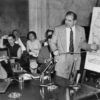
Students will study the treatment of gay and lesbian federal workers during the period of McCarthyism.

Instructional Resources for California Educators, Students, & Families

Students will study the treatment of gay and lesbian federal workers during the period of McCarthyism.
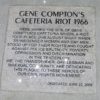
Students will learn about the Black Cat Tavern riots and the start of the gay rights movement.
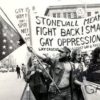
In this lesson, teachers will contextualize the LGBT rights movement by answering the question introduced in the History-Social Science Framework for California Public Schools: “How did various movements for equality build upon one another?” While activists fighting for LGBT rights utilized similar tactics and had some shared goals of those fighting for Civil Rights broadly, LGBT people in racial minority communities faced additional discrimination. Moreover, many fighting for broader Civil Rights did not consider sexual preference or gender identity as apart of their fight. In this lesson, students will explore historical perspectives to determine to what extent the movement for LGBT rights was or was not part of the broader movement for Civil Rights of the 1970s and 1980s. Students will read, annotate and categorize several primary sources to write a short essay describing and supporting their prospective with evidence from the texts.

In this lesson, students will engage in the historical context of the AIDS crisis of the 1980s exploring a timeline of major events and government responses to understand reasons for anger and unrest in the LGBT community. After establishing historical context, students will analyze activist responses looking specifically at different goals and methods used by the activist organization ACT-UP/Los Angeles.
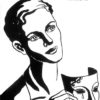
Students will experience strategies that will help them analyze primary sources, examine and use literacy strategies that will help them access primary sources, engage in close reading and text-based discussions in various settings including in pairs/groups and as a classroom and generate at least one writing task that is Common Core based.
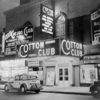
In this lesson, students will learn about changes and continuities in the 1920s, particularly focused on cultural and social areas. Students will analyze primary and secondary sources that explore race, gender, and sexuality in the 1920s.
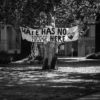
This lesson seeks to teach students about the history of the Ku Klux Klan and their prominence during the 1920s-1930s. Students will read different articles that explore the KKK and think broadly about the ways in which the KKK’s violent rhetoric and actions towards BIPOC (Black Indigenous People of Color) currently shape America’s political and social climate.